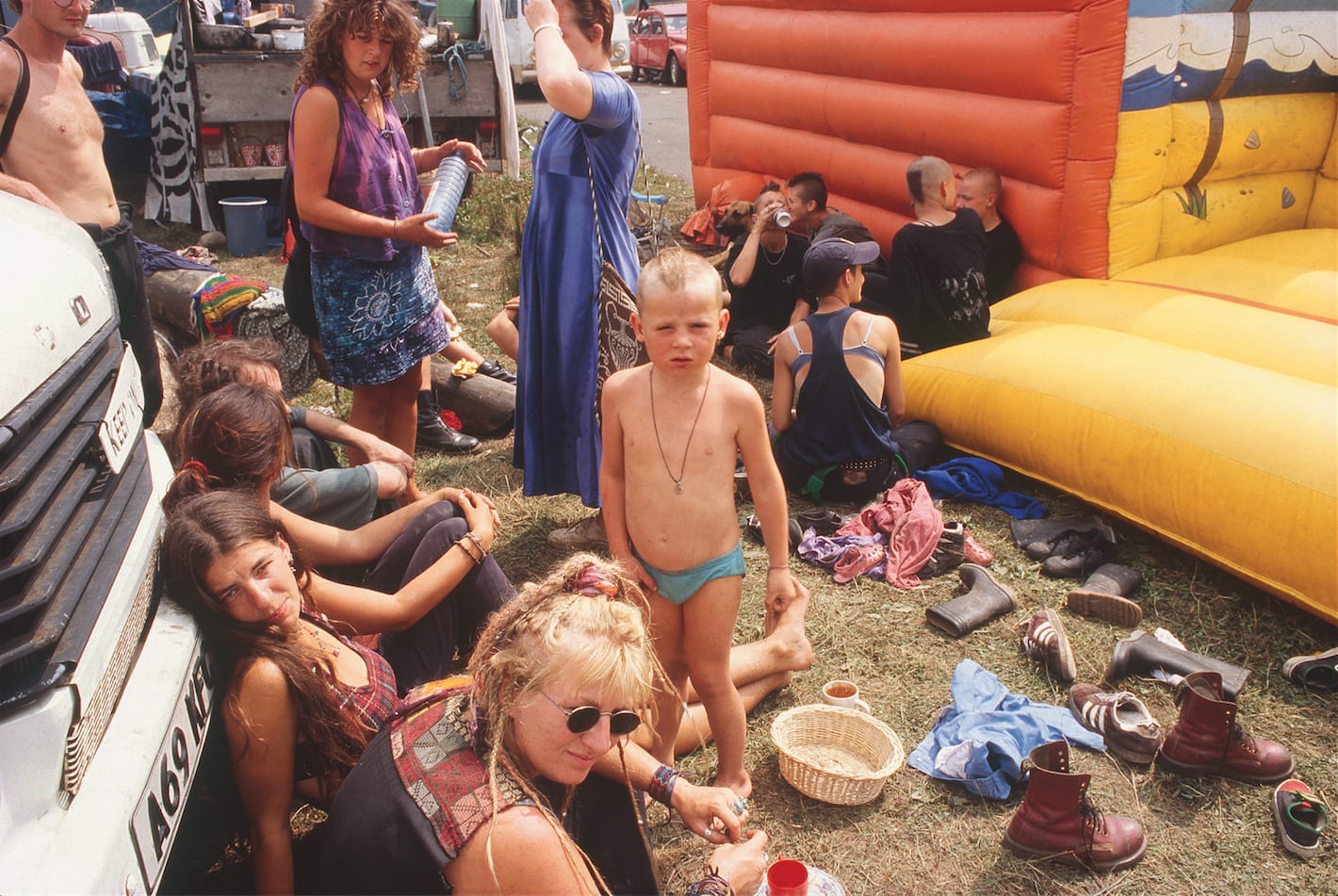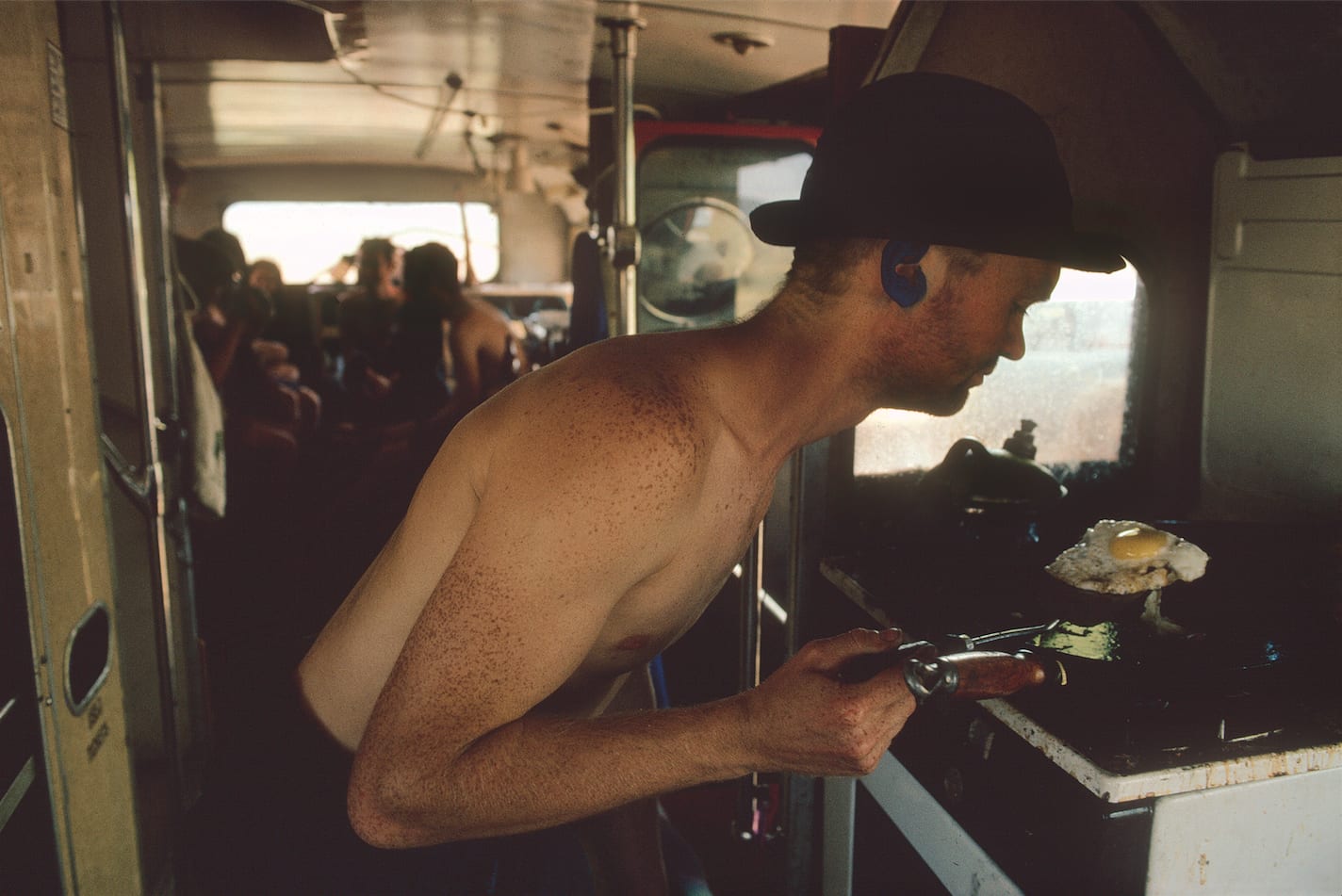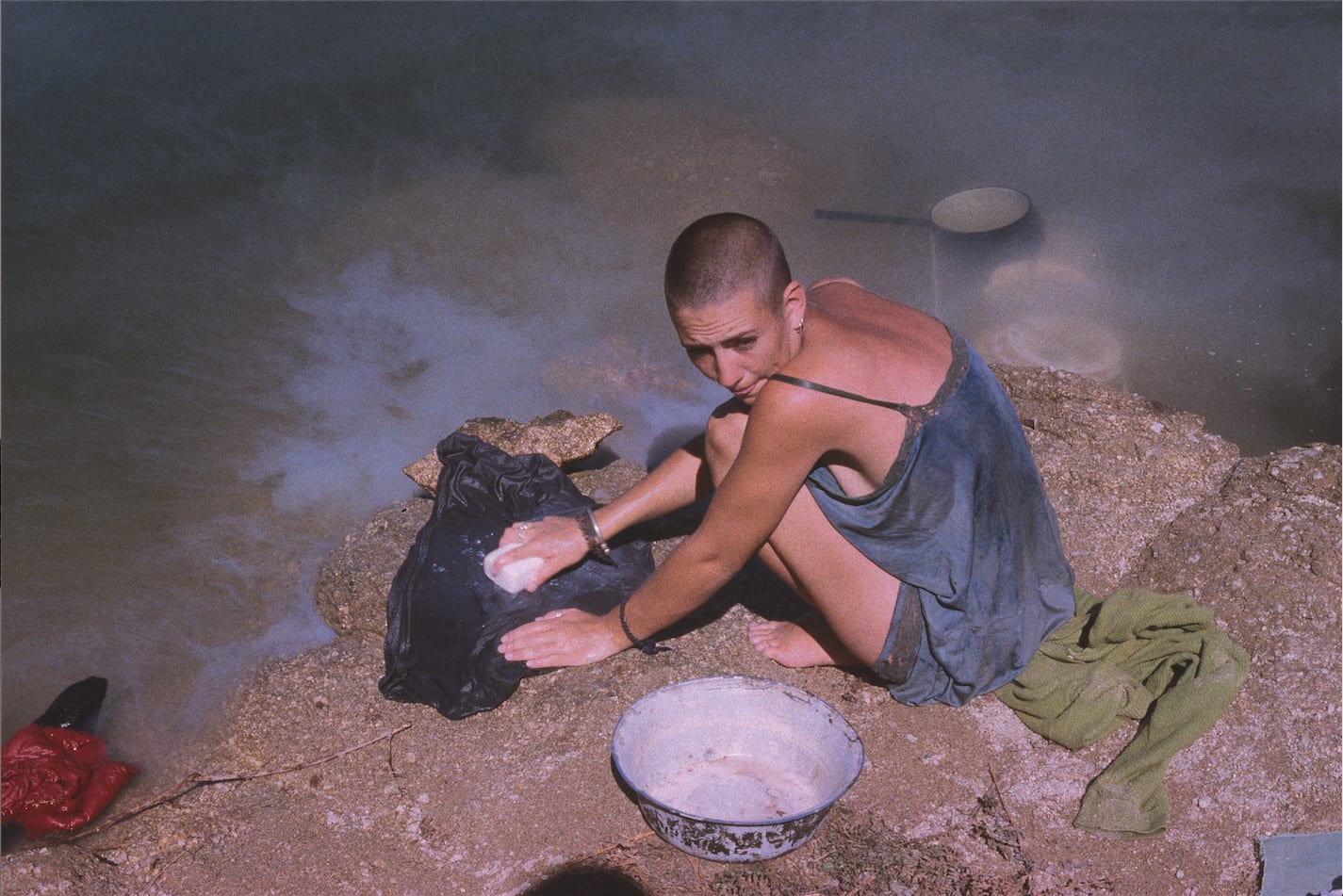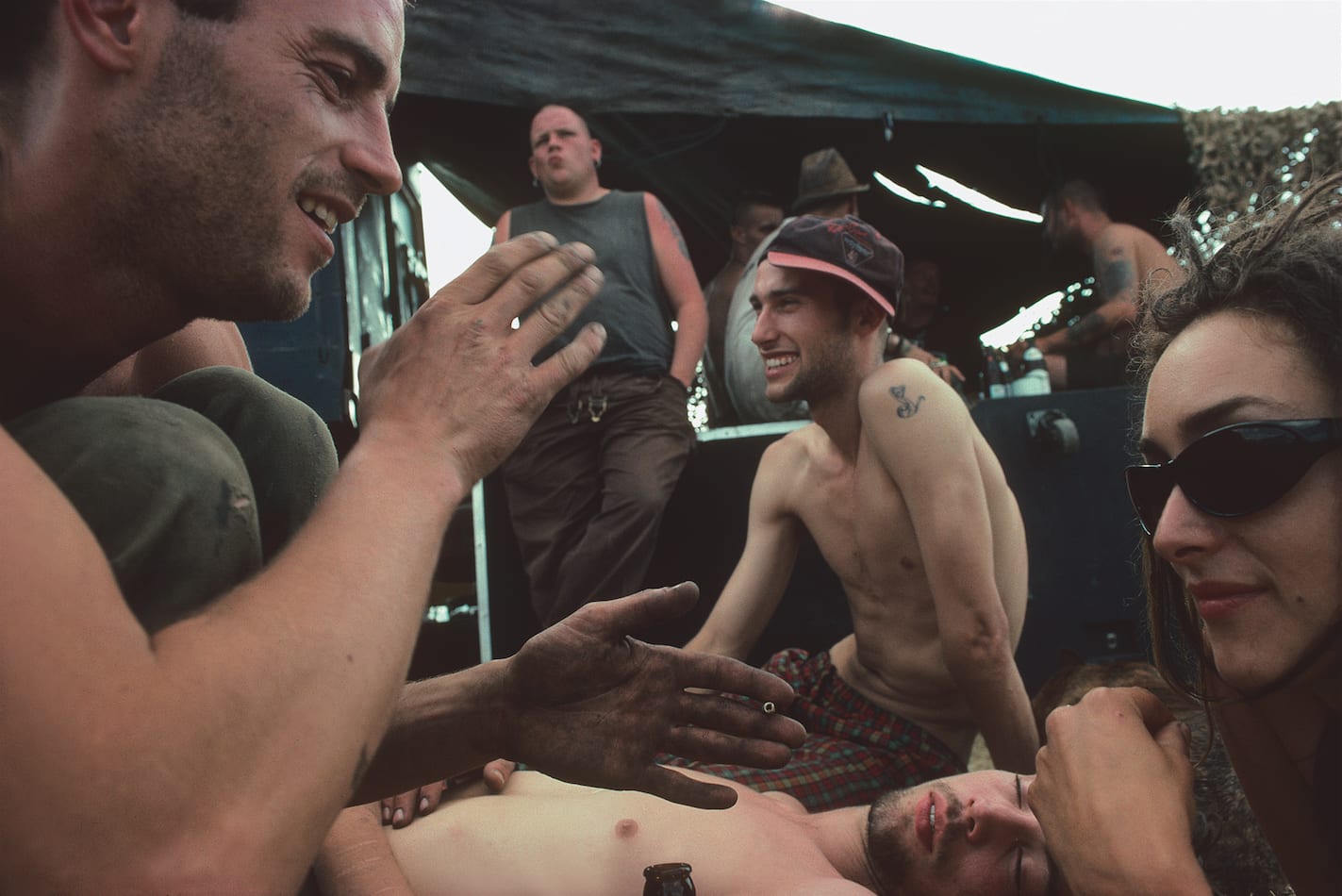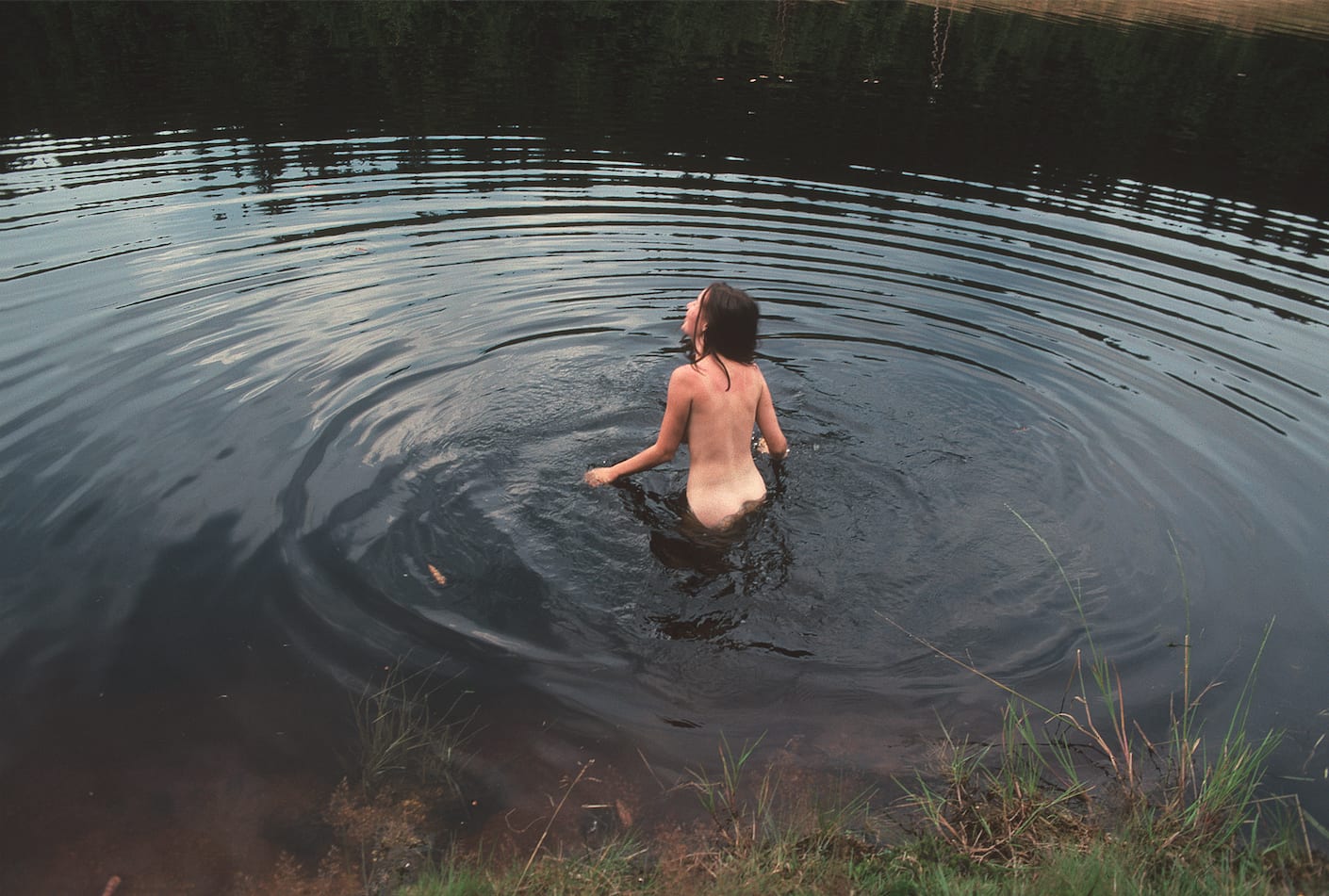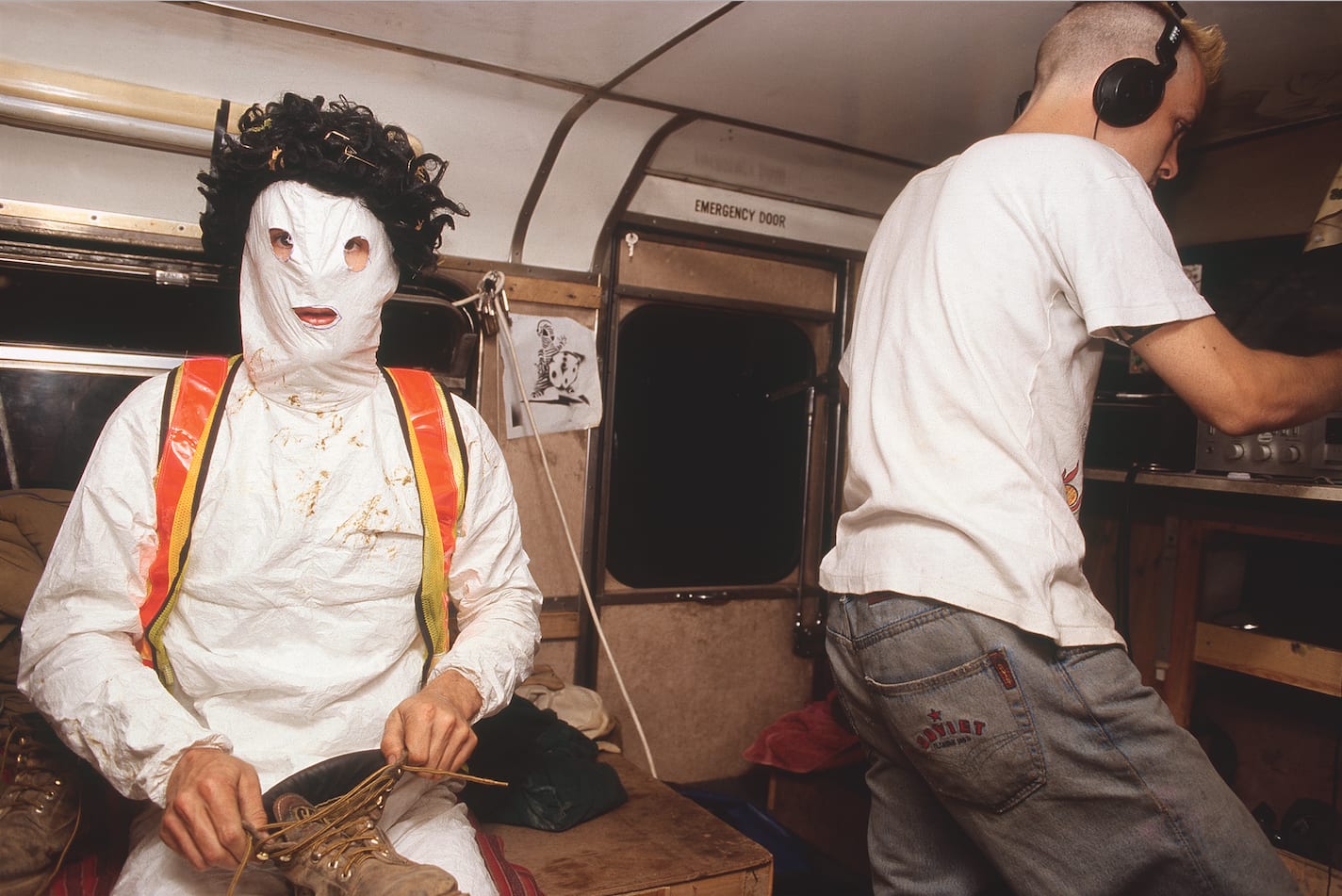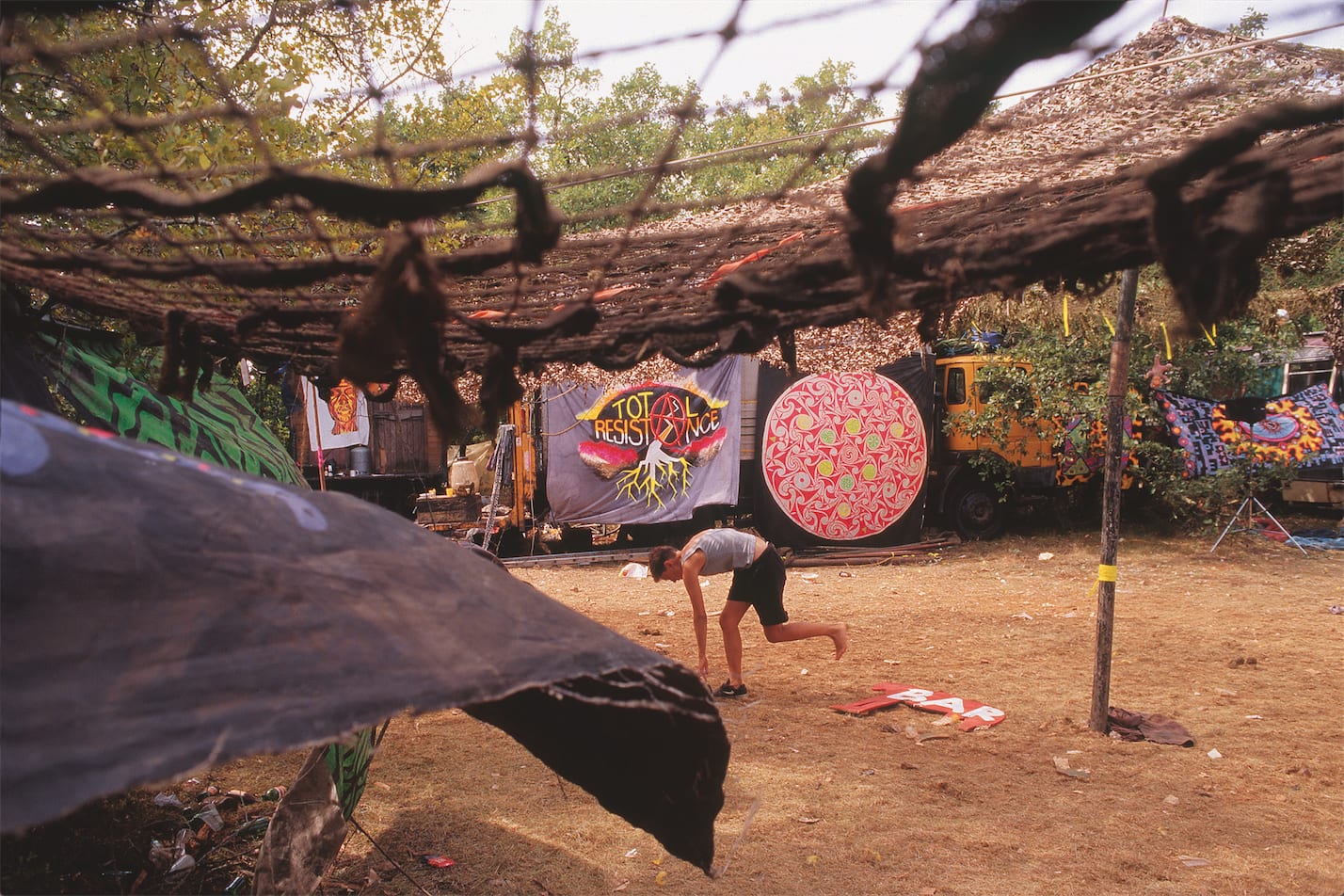In 1992, thousands of New Age travellers, ravers and gypsies converged on Castlemorton Common in Worcestershire for a week-long free festival. Widely reported in the press, the event attracted an estimated 20,000 to 40,000 people and became impossible for the police to close down. Tom Hunter, then a student at the London College of Printing, was involved in the free party scene but somehow missed the event; he soon realised he’d let a seminal moment pass him by and vowed not to do so again.
Castlemorton led directly to the Criminal Justice and Public Order Act 1994, however, which outlawed outdoor parties that included “sounds wholly or predominantly characterised by the emission of a succession of repetitive beats” in the UK. So, three years later, Hunter and a squad of fellow squatters were on their way to Europe in a decommissioned double-decker bus, complete with sound system and provisions.
Over the ensuing months, the group travelled to folk festivals in France, hippie gatherings in Austria and beach parties in Spain, with the bus – Le Crowbar – doubling up as a cafe selling egg butties, veggie burgers and beer. Hunter was there throughout with his camera, capturing the highs, lows and everyday run of things.
Over twenty years later, the images have been brought back to life in a photobook, also called Le Crowbar, published by Here Press. featuring colour images of hedonistic youths racing in cars, lounging in the sun and generally enjoying themselves, the book is a visual treatise on life on the road.
“One of the main agendas of the act was to restrict the assembly and movement of people, spelling the end of the free festival and traveller culture in the UK,” says Hunter. “I joined the exodus of travellers and captured the life we experienced. Twenty years on, it felt like the right time to review the images I created during this period and to look back at what we have lost in terms of culture, identity and a sense of freedom.”
That sense of careless abandon and freedom of expression is palpable, even though many of the images record apparently mundane scenes. young people eat, drink, sleep, hang out and laugh, but in Hunter’s hands the shots become something more – a girl sleeping in a field bathed in sunlight seems to epitomise liberty, a group dining alfresco round a makeshift table seems to have found utopia. Le Crowbar portrays an era that is now long gone, but it sums up a glorious escapism that many still secretly desire.
Le Crowbar is published by Here Press, priced at £30.
Find more of Tom’s work here.
First published in the February 2014 issue. You can buy the issue here.

